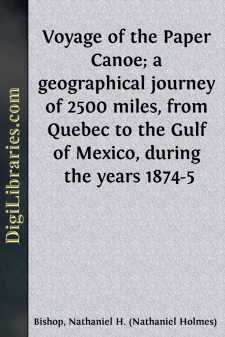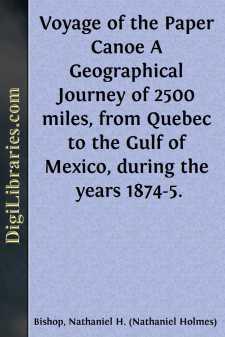Categories
- Antiques & Collectibles 13
- Architecture 36
- Art 48
- Bibles 22
- Biography & Autobiography 813
- Body, Mind & Spirit 142
- Business & Economics 28
- Children's Books 15
- Children's Fiction 12
- Computers 4
- Cooking 94
- Crafts & Hobbies 4
- Drama 346
- Education 46
- Family & Relationships 57
- Fiction 11829
- Games 19
- Gardening 17
- Health & Fitness 34
- History 1377
- House & Home 1
- Humor 147
- Juvenile Fiction 1873
- Juvenile Nonfiction 202
- Language Arts & Disciplines 88
- Law 16
- Literary Collections 686
- Literary Criticism 179
- Mathematics 13
- Medical 41
- Music 40
- Nature 179
- Non-Classifiable 1768
- Performing Arts 7
- Periodicals 1453
- Philosophy 64
- Photography 2
- Poetry 896
- Political Science 203
- Psychology 42
- Reference 154
- Religion 513
- Science 126
- Self-Help 84
- Social Science 81
- Sports & Recreation 34
- Study Aids 3
- Technology & Engineering 59
- Transportation 23
- Travel 463
- True Crime 29
Nathaniel H. (Nathaniel Holmes) Bishop
Nathaniel Holmes Bishop was an American adventurer and writer known for his remarkable journeys and travelogues. He is most famous for his books "The Voyage of the Paper Canoe" (1878) and "Four Months in a Sneak Box" (1879), which document his long-distance canoe and boat trips across North America. Bishop's travels covered thousands of miles, including a solo journey from Canada to the Gulf of Mexico in a 58-pound paper canoe. His works offer detailed observations of 19th-century American landscapes, wildlife, and the cultures he encountered during his travels.
Author's Books:
Sort by:
CHAPTER IX. FROM NORFOLK TO CAPE HATTERAS. THE ELIZABETH RIVER. — THE CANAL. — NORTH LANDING RIVER. — CURRITUCK SOUND. — ROANOKE ISLAND. — VISIT TO BODY ISLAND LIGHT-HOUSE. — A ROMANCE OF HISTORY. — PAMPLICO SOUND. — THE PAPER CANOE ARRIVES AT CAPE HATTERAS. On Saturday morning, December 5, I left the pier of the Old Dominion Steamship Company, at Norfolk, Virginia, and, rowing across...
more...
INTRODUCTION. The author left Quebec, Dominion of Canada, July 4, 1874, with a single assistant, in a wooden canoe eighteen feet in length, bound for the Gulf of Mexico. It was his intention to follow the natural and artificial connecting watercourses of the continent in the most direct line southward to the gulf coast of Florida, making portages as seldom as possible, to show how few were the...
more...



